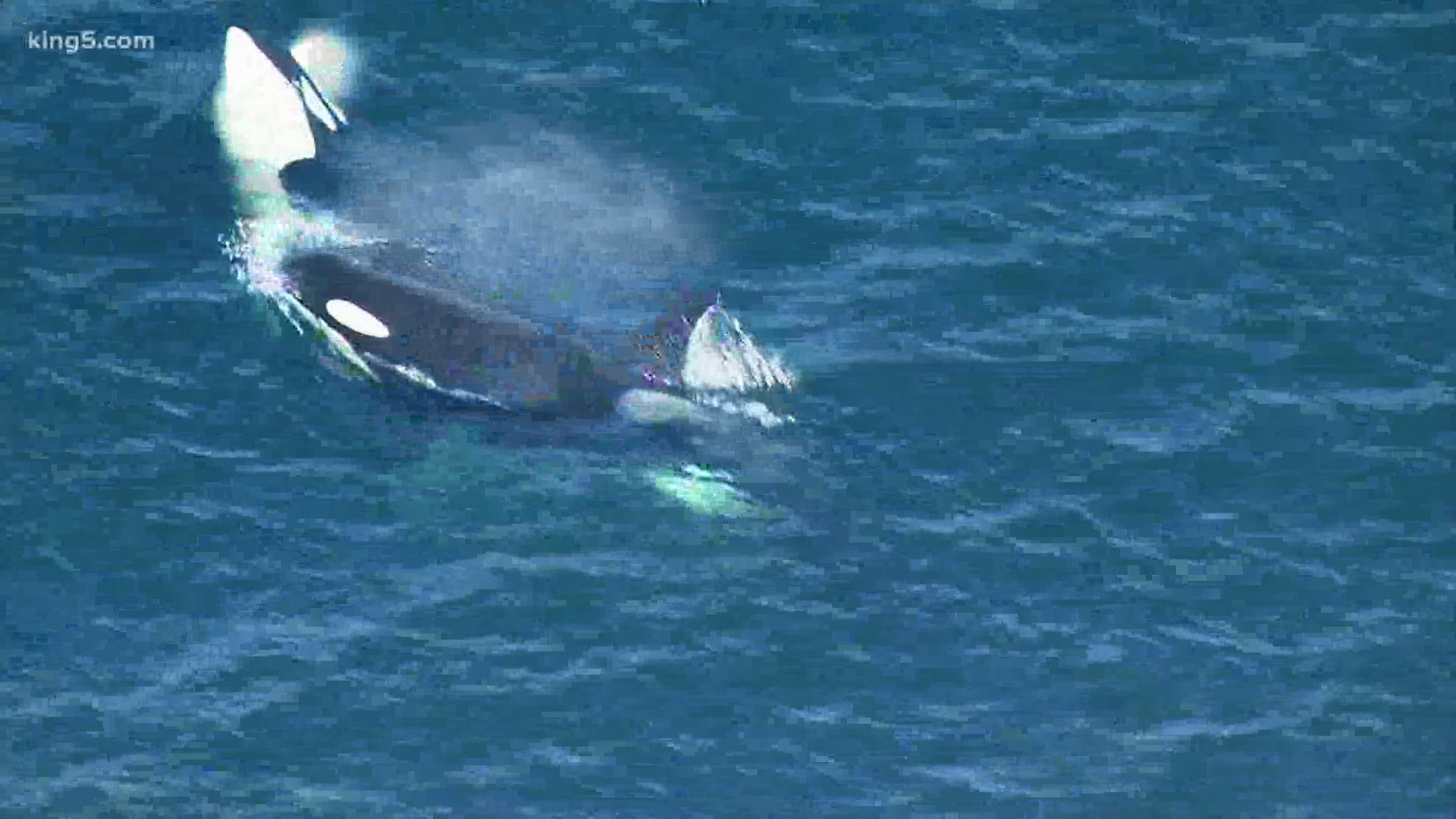WASHINGTON — The orca researchers believe to be Tahlequah, or J35, has given birth, according to the Pacific Whale Watch Association (PWWA).
Tahlequah gained national attention for carrying her dead calf for more than 1,000 miles for at least 17 days back in 2018. While experts have seen orcas mourn their offspring before, J35 clung to her calf for an unusually long period of time.
“As we were watching the greeting ceremony between J and L pods unfold Saturday, it felt like a special day on the water,” said Sarah McCullagh, a professionally trained captain and naturalist for San Juan Safaris of Friday Harbor. “We first saw J35 and her son J47 off by themselves away from the main group, then as we watched we quickly realized that there was a very small fin tucked in next to them. We called the Center for Whale Research over to investigate and sure enough, they confirmed that J35 had a new calf, J57. I was obviously elated, so excited for J35 after the incredible loss she suffered a couple of years ago, but also for the Southern Resident community as a whole. I definitely cried."
Tahlequah isn’t the only Southern Resident carrying a calf right now.
Sealife Response, Rehabilitation and Research (SR3) in July that researchers identified “a number” of Southern Resident orcas that are pregnant using aerial imaging. The drone photos measure the orcas’ growth and body conditions to track nutritional health. “Obvious shape changes” led researchers to identify the pregnant whales, according to a news release.
The group shared photos of another orca, L72, which showed increased width mid-body between September 2019 and July 2020 indicating she is in the late stages of pregnancy. Killer whale pregnancies typically last 17-18 months, according to SR3.
Although SR3 says orca pregnancies are not unusual, successful births have become less common. The majority of orca pregnancies end in miscarriages, and a 2017 study found that could be linked to nutritional stress and a low salmon population.
There are currently 73 Southern Resident orcas, which is among the lowest in 30 years, according to a census from the Center for Whale Research
“With such a small population…every successful birth is hugely important for recovery,” SR3 said.
Researchers are reporting that the whales are generally looking robust and healthy, finding food in areas outside the Salish Sea.
A big factor in the declining Southern Resident population has been a lack of Chinook salmon, their main food source.
"As we remain cautiously optimistic for the health and survival of this beautiful new addition to Jpod, we hope this news does not distract or detract from the real issues and threats these whales face in this region," PWWA said in a news release.

